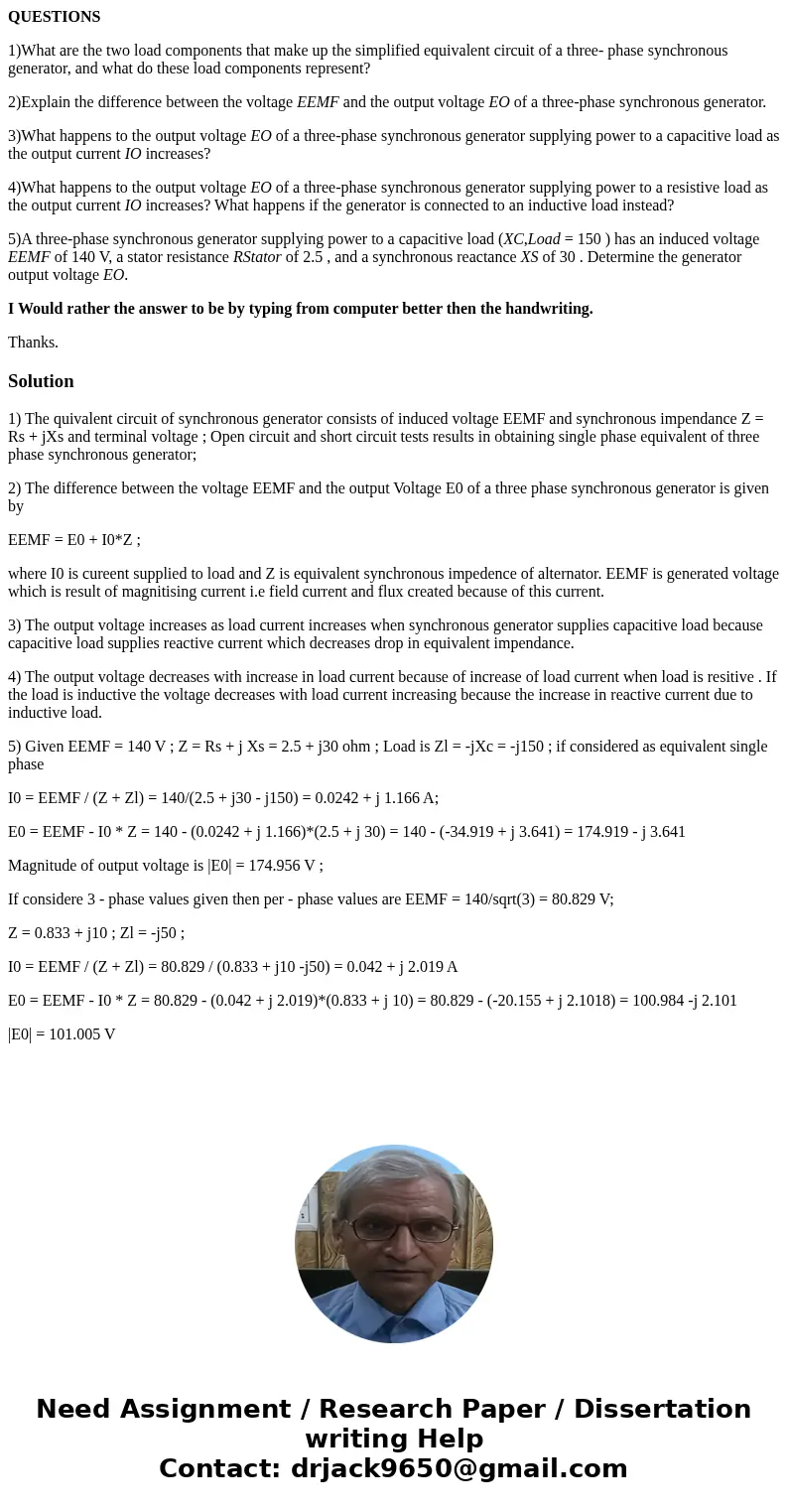QUESTIONS 1What are the two load components that make up the
QUESTIONS
1)What are the two load components that make up the simplified equivalent circuit of a three- phase synchronous generator, and what do these load components represent?
2)Explain the difference between the voltage EEMF and the output voltage EO of a three-phase synchronous generator.
3)What happens to the output voltage EO of a three-phase synchronous generator supplying power to a capacitive load as the output current IO increases?
4)What happens to the output voltage EO of a three-phase synchronous generator supplying power to a resistive load as the output current IO increases? What happens if the generator is connected to an inductive load instead?
5)A three-phase synchronous generator supplying power to a capacitive load (XC,Load = 150 ) has an induced voltage EEMF of 140 V, a stator resistance RStator of 2.5 , and a synchronous reactance XS of 30 . Determine the generator output voltage EO.
I Would rather the answer to be by typing from computer better then the handwriting.
Thanks.
Solution
1) The quivalent circuit of synchronous generator consists of induced voltage EEMF and synchronous impendance Z = Rs + jXs and terminal voltage ; Open circuit and short circuit tests results in obtaining single phase equivalent of three phase synchronous generator;
2) The difference between the voltage EEMF and the output Voltage E0 of a three phase synchronous generator is given by
EEMF = E0 + I0*Z ;
where I0 is cureent supplied to load and Z is equivalent synchronous impedence of alternator. EEMF is generated voltage which is result of magnitising current i.e field current and flux created because of this current.
3) The output voltage increases as load current increases when synchronous generator supplies capacitive load because capacitive load supplies reactive current which decreases drop in equivalent impendance.
4) The output voltage decreases with increase in load current because of increase of load current when load is resitive . If the load is inductive the voltage decreases with load current increasing because the increase in reactive current due to inductive load.
5) Given EEMF = 140 V ; Z = Rs + j Xs = 2.5 + j30 ohm ; Load is Zl = -jXc = -j150 ; if considered as equivalent single phase
I0 = EEMF / (Z + Zl) = 140/(2.5 + j30 - j150) = 0.0242 + j 1.166 A;
E0 = EEMF - I0 * Z = 140 - (0.0242 + j 1.166)*(2.5 + j 30) = 140 - (-34.919 + j 3.641) = 174.919 - j 3.641
Magnitude of output voltage is |E0| = 174.956 V ;
If considere 3 - phase values given then per - phase values are EEMF = 140/sqrt(3) = 80.829 V;
Z = 0.833 + j10 ; Zl = -j50 ;
I0 = EEMF / (Z + Zl) = 80.829 / (0.833 + j10 -j50) = 0.042 + j 2.019 A
E0 = EEMF - I0 * Z = 80.829 - (0.042 + j 2.019)*(0.833 + j 10) = 80.829 - (-20.155 + j 2.1018) = 100.984 -j 2.101
|E0| = 101.005 V

 Homework Sourse
Homework Sourse